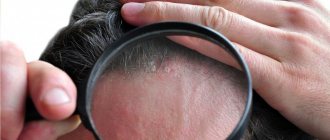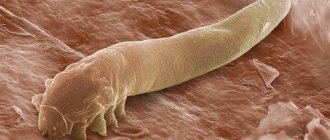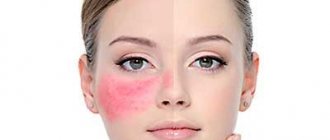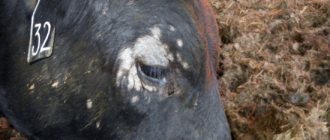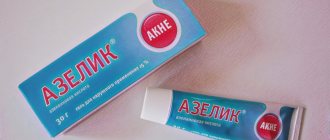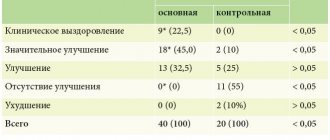Rosacea is a common non-infectious chronic skin disease with a number of typical symptoms:
- Redness of the skin and the appearance of spider veins in the cheeks, cheekbones, nose and forehead;
- Itching and burning in the affected areas;
- Large rosacea - papules and pustules in the affected areas.
Around the world, about 10% of men and women of all ages suffer from the disease. Most often, rosacea manifests itself at the age of 30–40 years and begins with the expansion of small blood vessels in the skin of the face (less commonly, the chest and abdomen).
Causes of rosacea
The main cause of the disease today is considered to be a sharp expansion of the superficial vessels of the facial skin and subsequent stagnation of blood, resulting from the influence of certain internal and external factors.
External factors:
- Exposure of skin to ultraviolet light, frost or heat
- Alcohol, nicotine, some types of spices
- Excess of fatty, spicy and fried foods in the diet
- Taking a number of medications, including steroids
- Aggressive care - incorrectly selected cosmetics, frequent chemical peels
Internal factors:
- Genetic predisposition (in 40% of cases, rosacea is found in relatives)
- Gastrointestinal diseases
- Endocrine disorders
- Decreased immunity
- Infectious skin diseases
- Disturbances in the functioning of the vegetative-vascular system
- Menopause (if the disease develops in women 40+)
It is almost impossible to identify one specific factor, so very often doctors are forced to work by the method of exclusion. First you need to exclude somatic diseases and reduce the impact of external factors on the body. It is impossible to cope with rosacea with ointments and tablets alone if the development of the disease is based on serious disturbances in the functioning of the body.
Stages of the procedure
At the initial consultation, the doctor examines the patient and draws up an individual treatment plan. Then the specialist selects the necessary attachment for the M22 device and the range of characteristics, taking into account the characteristics of the course of the disease. During the procedure, the patient must wear protective glasses. The doctor performs sequential treatment of the affected areas of the skin using light radiation. The procedure is absolutely bladeless and comfortable. The duration of sessions and their frequency depend on the complexity of the disease and its type.
Stages of the disease and symptoms
Rosacea is characterized by alternating periods of exacerbation and remission. During periods of exacerbation, 3 main stages can be distinguished:
- Erythematotelangiectatic
. In the area of the cheeks, cheekbones and nose, small vessels, spider veins and red spots - erythema - appear. Their appearance is accompanied by burning and itching. - Papulopustular
. Swelling of the face appears, and large pink-red acne (papules) appear in the area of the cheekbones, forehead, nose and chin. A person may initially mistake them for an allergic reaction or regular acne. - Pustular nodular
. Erythema and papules spread throughout the face, papules merge with each other, and the skin becomes denser. The inflammation is not relieved and the swelling intensifies. Scars and depressions appear on the skin.
At all stages of the disease, there is a risk of ophthalmic rosacea - damage to the mucous membranes of the eyes due to the development of blepharitis, conjunctivitis, chalazion, keratitis, etc.
The disease should not be taken lightly. It is better to consult a doctor at the first stage in order to begin treatment before the consequences become irreversible.
Symptoms
Rosacea affects the skin of the face - cheeks, forehead, nose. Prolonged redness and spider veins appear, then small bright red nodules appear - papules, in the center of which purulent pimples appear. The rashes do not leave scars behind. A patient with rosacea feels itching and hot flashes to the face. The course of the disease is accompanied by frequent exacerbations and can last indefinitely. Over time, the skin of a patient with rosacea becomes rough and thick, and knobby formations appear. In some cases, lumpy hypertrophy of the skin of the nose develops - rhinophyma; deformation of the eyelids, ears, chin and forehead is also observed. There are no comedones with rosacea.
Atypical forms of rosacea
- Lupoid or granulomatous. Accompanied by the development of granulomas - yellow papules that leave scars on the skin after opening.
- Conglobat. Accompanied by large nodes, fistulas and the development of a purulent process.
- Halogen. Develops while taking bromine- or iodine-containing drugs.
- Steroid. Develops while taking steroid drugs.
- Gram negative. Develops against the background of uncontrolled or improper use of antibacterial drugs.
- Fulminant, or lightning fast. It most often occurs in young women and is characterized by the rapid development of all three stages of the disease. Accompanied by swelling and the formation of papules with purulent contents.
Treatment
Therapy for rosacea is a complex matter and largely depends on the stage of the disease. The course is selected individually. The doctor prescribes astringent and disinfectant lotions, pastes; electrocoagulation, dermabrasion, and cryotherapy work well. In particularly severe cases, antibiotics are prescribed. Vitamin therapy comes to the rescue in the treatment of rosacea. It is important to get rid of concomitant diseases: vegetative-vascular dystonia, gastrointestinal and hormonal disorders. Lifestyle requires complete correction. During treatment, it is important to follow a diet and eliminate provoking factors.
How to treat rosacea or rosacea?
The diagnosis of rosacea must be made by a dermatologist. To do this, an examination is carried out, an assessment of the condition of the blood vessels and dermatoscopy (study of the microflora of the skin). At your appointment, it is important to tell your doctor about all your symptoms, as well as the length of time you have been experiencing symptoms.
Treatment for rosacea includes:
- Antibacterial therapy (if the infectious nature of the rash is identified)
- Vasoconstrictor and anti-inflammatory drugs
- Therapeutic creams and ointments that normalize the activity of the sebaceous glands and have healing, antibacterial and decongestant properties. These include ointments with azelaic acid, metronidazole, and thermal water.
- Physiotherapy: laser, microcurrents, cryotherapy, electrocoagulation. It is worth noting that laser therapy helps reduce the number of relapses and alleviate symptoms of rosacea.
Refusal of treatment and attempts to treat the disease with home remedies can lead to aggravation of its course.
Prevention of rosacea
In order to prevent the development of rosacea in people with a predisposition, it is necessary to follow a number of preventive measures:
- Choose the right skin care
- Avoid exposing your skin to too hot or cold water
- Avoid prolonged exposure to the sun and use creams with SPF
- Avoid cosmetics with hormonal and vasodilating components - steroids, alcohol, heavy oils
- Protect your skin from frost with thick creams
- Avoid exposure to steam (bath, sauna) and excessive physical activity
- Follow a diet containing large amounts of protein, vegetables and fruits, and dairy products. Avoid alcohol, smoked foods and fatty foods as much as possible.
- Timely detect the development of somatic diseases that can trigger a relapse of rosacea
- Visit a dermatologist once a year for a consultation and assessment of your skin condition.
Doctors at MC “Health” are convinced that the disease can be prevented or the severity of its symptoms can be reduced if you follow preventive recommendations and consult a dermatologist in a timely manner.
Unfortunately, the longer you wait to see a doctor, the more changes your skin undergoes. Scars and post-acne after rosacea are difficult to correct and can remain with a person for life. Don't wait, contact a specialist in a timely manner!
In our clinic, dermatologists with extensive experience are always ready to see you. You can take the necessary tests in our laboratory in order to get results as soon as possible. Sign up at any branch of the MC “Health” and receive qualified assistance in the treatment of rosacea.
Using the M22 platform provides:
- comprehensive solution to the problem, eliminating all clinical manifestations of rosacea, getting rid of pathological microorganisms and accelerating skin regeneration;
- an effect that will not keep you waiting. Visible improvements in skin condition are observed after the first procedure;
- safety and absence of side effects;
- no rehabilitation period;
- personalized approach to each client, thanks to the availability of a variety of attachments and choice of light emission characteristics.
Diagnostics
The diagnosis, as recommended in medical textbooks and articles, is made based on the results of a physical examination of the visible manifestations of the disease and clarification of the medical history. The patient is asked in detail about the time of onset of primary symptoms. The doctor may ask about factors that, in the patient's opinion, reduce or increase symptoms. An additional research method, biopsy, is rarely used. This is the removal of a small piece of skin with a swab or scraping to identify parasites. In rare cases, monthly blood chemistry tests are performed for total bilirubin, serum alanine aminotransferase, aspartate aminotransferase, triglycerides, total cholesterol, glucose, serum creatinine, or alkaline phosphatase. Sometimes testing is done for antinuclear antibodies, which appear in the bloodstream as indicators of destruction of connective tissue cells. According to indications, seek advice from one of the specialists: an ophthalmologist, gastroenterologist, endocrinologist or psychotherapist.
An ophthalmologist is necessary if there is a risk of developing ocular rosacea. This specialist can prescribe supportive measures to alleviate the patient’s suffering: relieve the feeling of pain and dryness in the eyes, reduce sensitivity to bright light.
The gastroenterologist will prescribe additional diagnostic procedures to assess the condition of the digestive system. He can develop recommendations for proper nutrition or therapeutic fasting. It has been confirmed that smoked foods, saltiness, spices, citrus fruits, coffee-containing drinks, as well as alcohol increase the redness of the facial skin and provoke the appearance of new rashes.
An endocrinologist uses an examination to identify hormonal imbalances. Pathologies of the endocrine system often cause hot flashes. If unpleasant skin rashes appear, pre-prescribed hormonal therapy requires adjustment.
The psychotherapist will conduct a conversation to determine the general psycho-emotional state. He will advise what psychological techniques, relaxation techniques or sedatives can be used to get rid of depression. Patients suffering from rosacea, especially the severe form, often become more shy and withdrawn. Women usually hide imperfections with camouflage cosmetics, hide them behind long hair, and do not like to be seen. Females aged 30 to 40 years are at risk.
Equipment
Fraxel re:store
A laser that has gained wide recognition in more than 80 countries around the world.
M22™ device
M22 is the standard of multifunctional lighting equipment for aesthetic cosmetology from Lumenis.
Antera 3D
Used for diagnostics before cosmetic procedures, as well as for subsequent assessment of their effectiveness.
Contraindications
| Absolute | Relative |
|
|
Possible complications
With advanced rosacea, the following develop:
- Purulent-septic complications, when an oblong formation rises above the level of the skin, from which pus periodically oozes. This is a slow-burning process of inflammation.
- If the eyes are affected, then a gradual deterioration of vision occurs. With advanced ophthalmic rosacea, complete loss of vision is possible.
- Deterioration in appearance caused by distortion of facial features. With persistent erythrema and edema, phymatous growths are observed, which spoils the appearance. With such a complication, the quality of life deteriorates.
In case of exacerbation of the disease or its complications, social maladjustment develops: people are afraid to go out, communicate, and appear in society.
